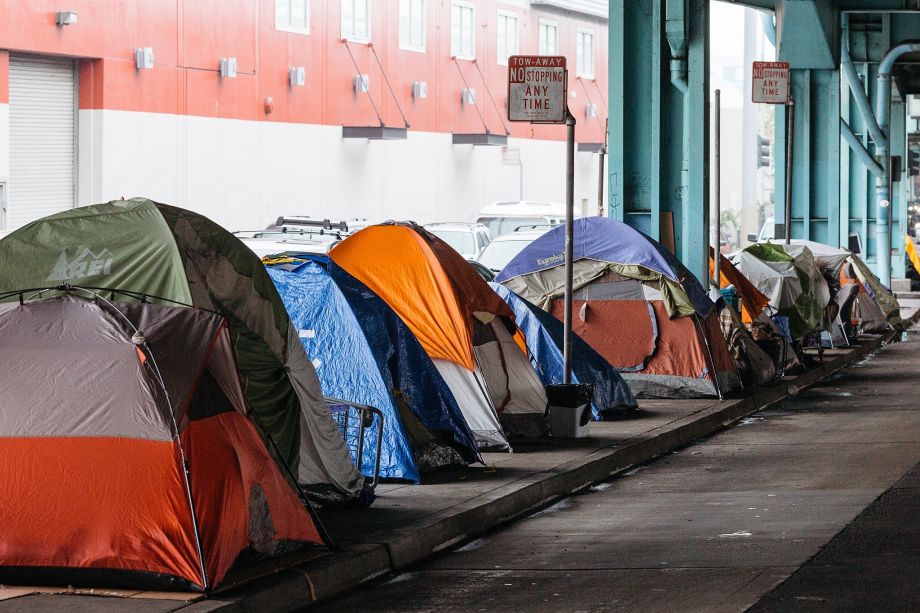How false promises led to Prop. Q’s success
Even though the votes are still officially unofficial as of press time, the majority are reporting and it seems like November 8 was a victory for homeless and low income individuals in San Francisco in a lot of ways. It seems as though the city will pass the local Propositions C (to convert at-risk multiunit residential buildings into permanent affordable housing) and J (to create a Homeless Housing and Services Fund), and fail U (to increase the income eligibility limit on affordable housing units), R (Neighborhood Crime Unit), and P (prohibits competitive bidding for affordable housing projects). Since we may still be able to get the city to fund J without the income, the failing of K may be moot anyway, it seems the minor issue is that the public voted no on M (to create the Housing and Development Commission) and the major issue is that Q passed.
Prop. Q (“Housing Not Tents”) was initially polling a lot further ahead than the just 1.7 points over the required majority lead, but that may have been due to the success of their campaign of misinformation. Prop Q’s website, www.housingnottents.com, states that the initiative would “help move homeless San Franciscans out of tent encampments and into shelters, supportive services, treatment and housing.” Even the name “Housing Not Tents” implies that the prop will provide an alternative to the tent encampments, and that this alternative will he housing, or at least putting forth financial support for affordable housing or shelters. The “About” section of the website boasts some past accomplishments—two new navigation centers, and reallocated funds for homeless services—but nothing related to the measure, which offered no service provisions. The website also lacks specific information on the housing that would be made available to tent residents, but this is probably because the housing isn’t really that integral to the proposition at all.
While the City already prohibited “the willful obstruction of public sidewalks” or sitting and lying on the sidewalk (from 7 a.m. to 11 p.m.), the law did not specifically outright ban tents on the sidewalk … until Q. What the Yes On Q vote did was allow the police to provide residents of tent encampments 24 hours’ notice before a forcible clearing-out, with their options being one night in an available shelter bed or a one-way bus ticket out of San Francisco, while the resident’s personal property is seized and stored away by the city, and then it’s discarded after 90 days.
The Yes on Prop Q campaign focused on the danger of sexual assault happening in tent encampments. A video posted on their Facebook claims “one of the number one things of why these tent encampments are so dangerous is because of the assaults.” Even a source from one of their own articles—which indicates that domestic violence was the second highest cause of homelessness behind “inability to pay rent”—states that only 16 percent of homeless persons are victims of domestic abuse at all. Using such a heavy campaign comes at a price: success. Nobody wants to harm victims of assault or domestic violence, so it’s an easy and powerful way to clearly assign a “right” and “wrong” to an issue, even if the reality is far more complex and untrue.
They construe a certain image of tent encampments as extremely dangerous, one which is damaging and lasting and paints shelters as the lesser of two evils. Many people who live in tent encampments actually report that they feel safer in the encampments. The group of tents acts as a sort of neighborhood, maintaining that there is safety in numbers, and sometimes even functioning as a small community. And while living on the street does significantly increase an individual’s chance of experiencing abuse or assault, it is also far more likely to be assaulted or abused in a more physically vulnerable position like an open mattress on a sidewalk than in closed-off space like a tent.
Some of the most popular advertisements for the Yes on Q campaign were quick 15- and 30-second clips that, to the average viewer may seem harmless or unbiased, but definitely possess the same negative tones which accompany the majority of the media representation of homelessness—with one man citing the new hardship of needing to spend a year testing his blood for HIV after stepping on a dirty needle left behind by a neighbor from the nearby tent encampment. The idea that these people living in encampments are a burden as hazards existing in “Unsafe and Inhumane” conditions is particularly harmful, but also effective. This “Growing Health and Safety Problem”, the Yes on Q website dubs tents, is evaluated on the increase of complaints on homeless encampments to the city’s 311 help line and police department. People are easily persuaded by fear, and it is unfortunately too easy to convince the mass majority of consumers that there are other people out there whose very existence threatens their own personal safety.
The Q campaign leaned a lot on the Oxford English Dictionary’s word of the year: Post-truth. Post-truth is when appeal to emotion is more effective, and therefore more important, than actual facts—such as “Housing Not Tents.” Even though there is simply no housing involved in Q’s ballot initiative, the idea of countering domestic violence and sexual assault, while simultaneously promising housing was simply more enticing. This political movement run on lies and emotions looks like it may have passed, unfortunately resulting in not only the furthering of harmful stereotypes and stigmas on homelessness, but an additional systemic disadvantage for the already disenfranchised. And while this may be discouraging, it is not hopeless: Walls can be broken down as easily as they are constructed, and even in the face of misinformation and manipulation, there will always be those who fight for the justice and equality for all.


